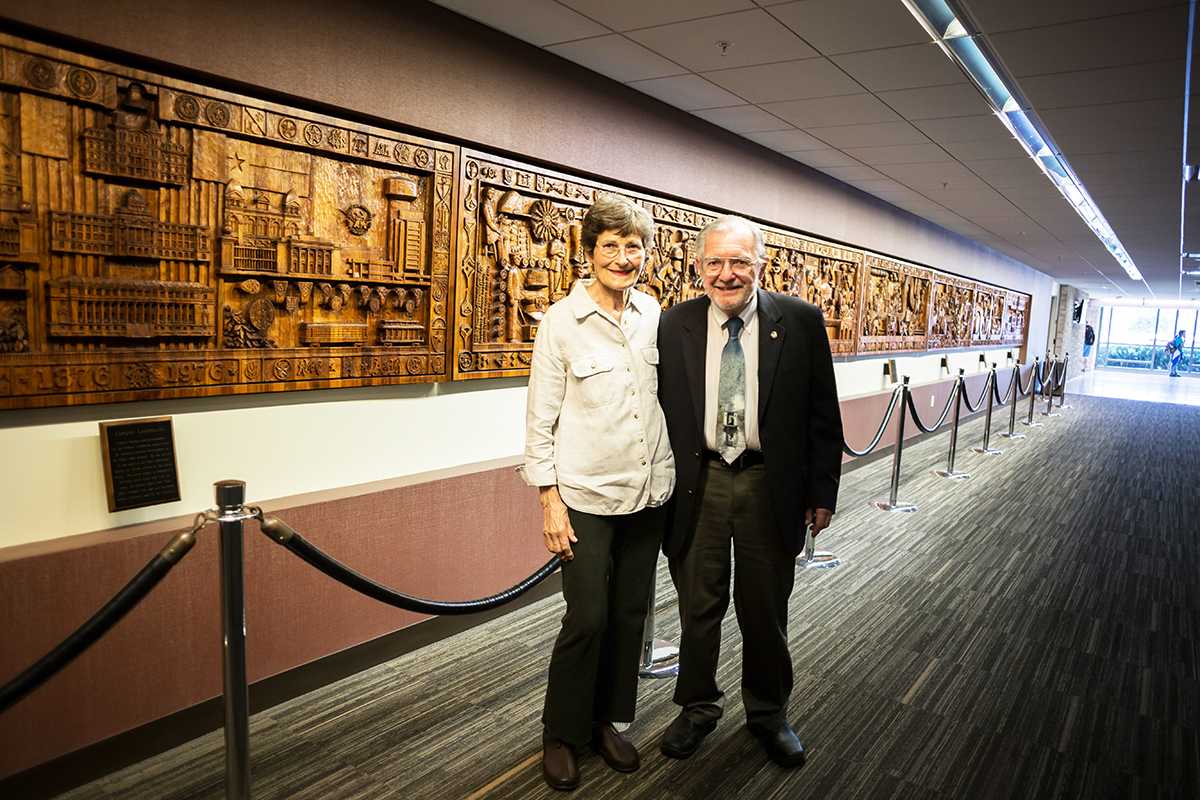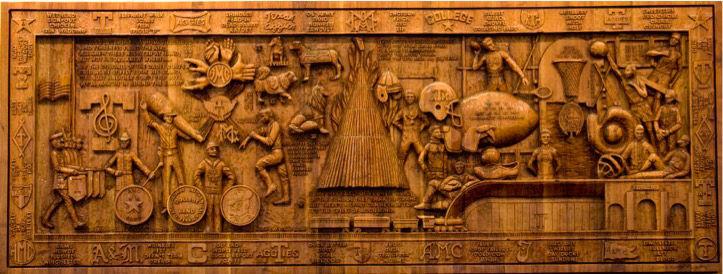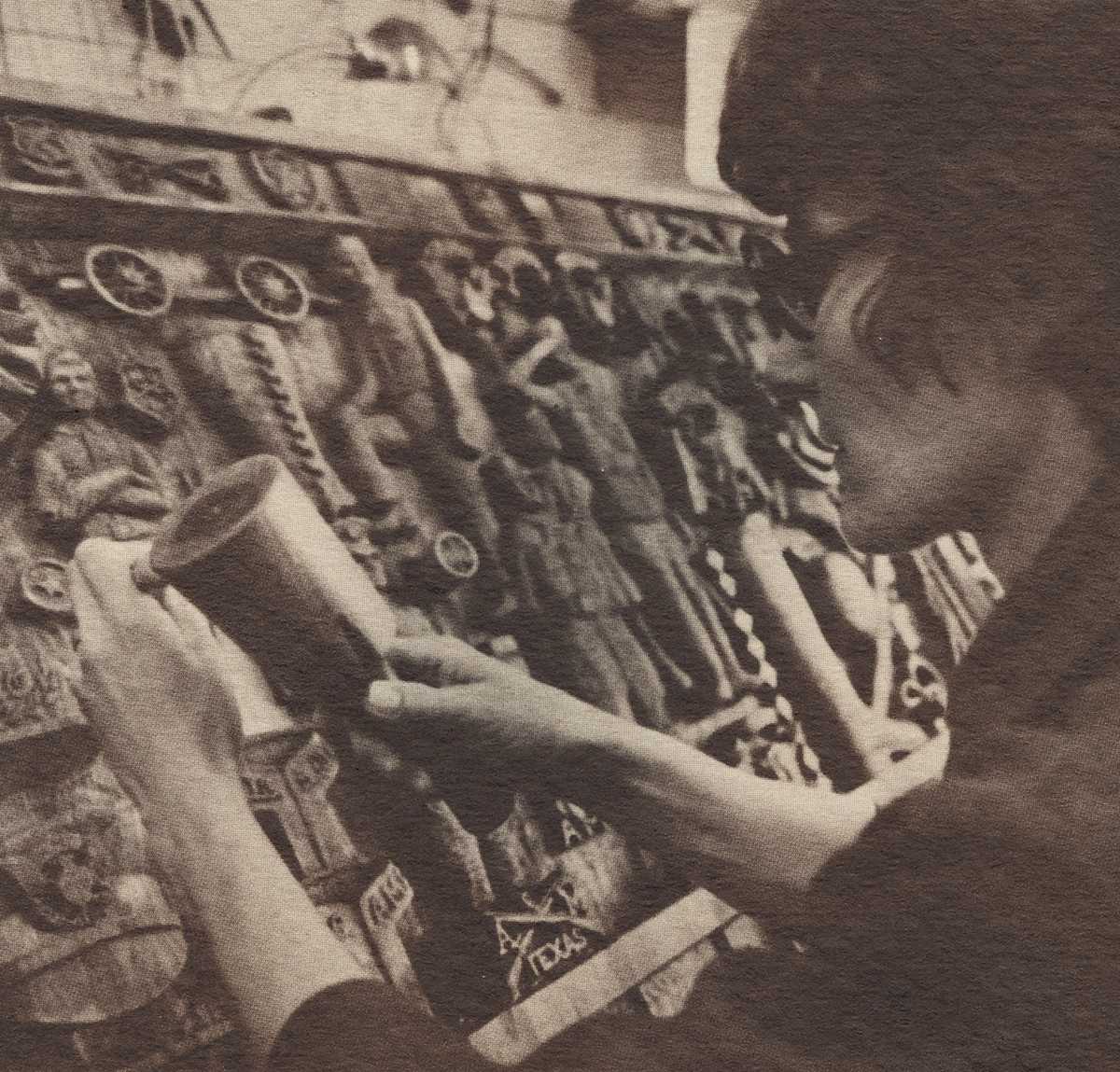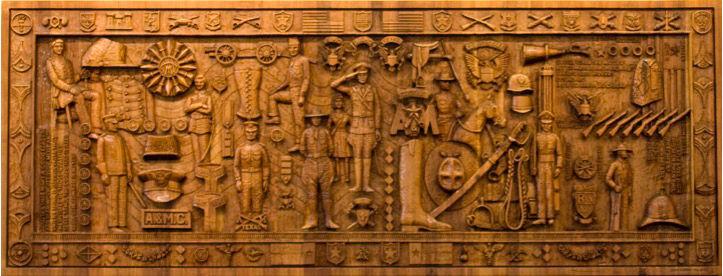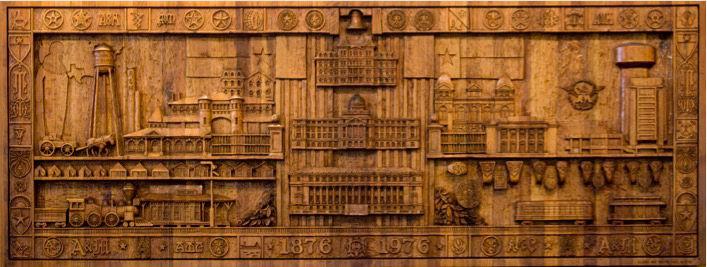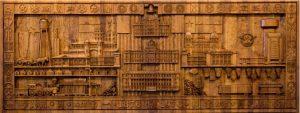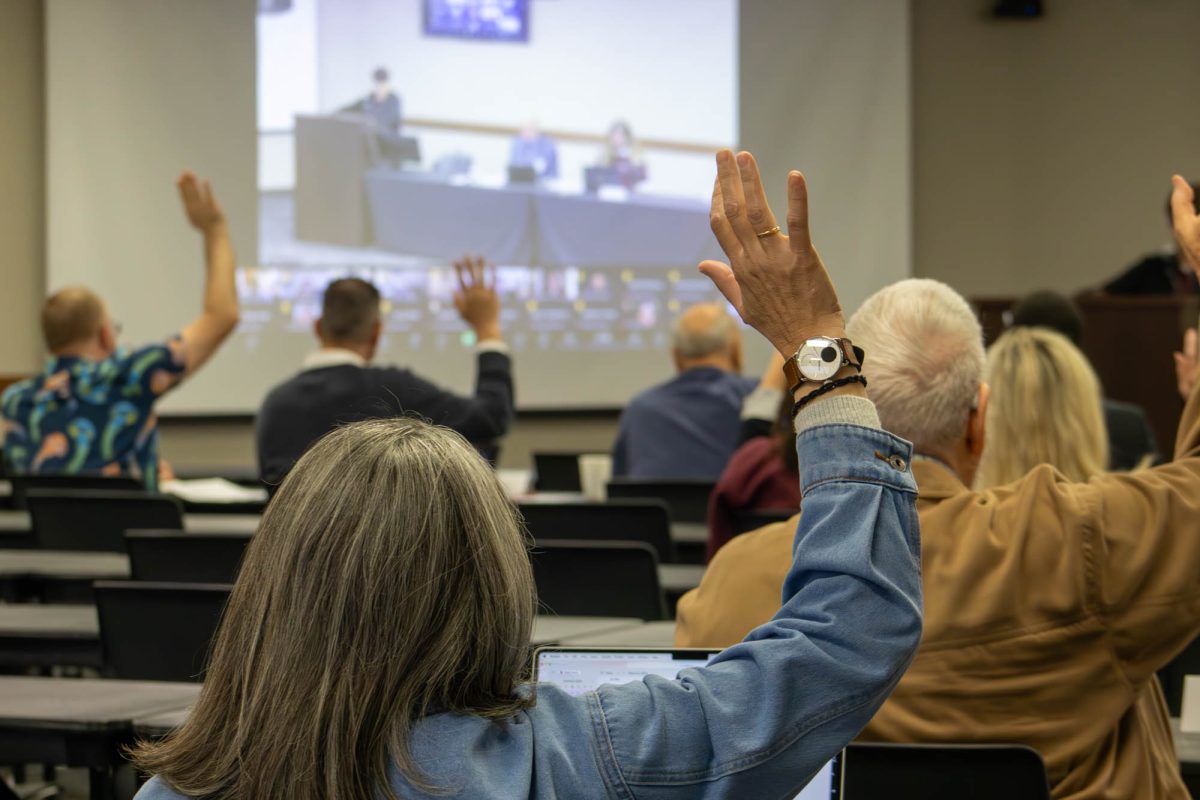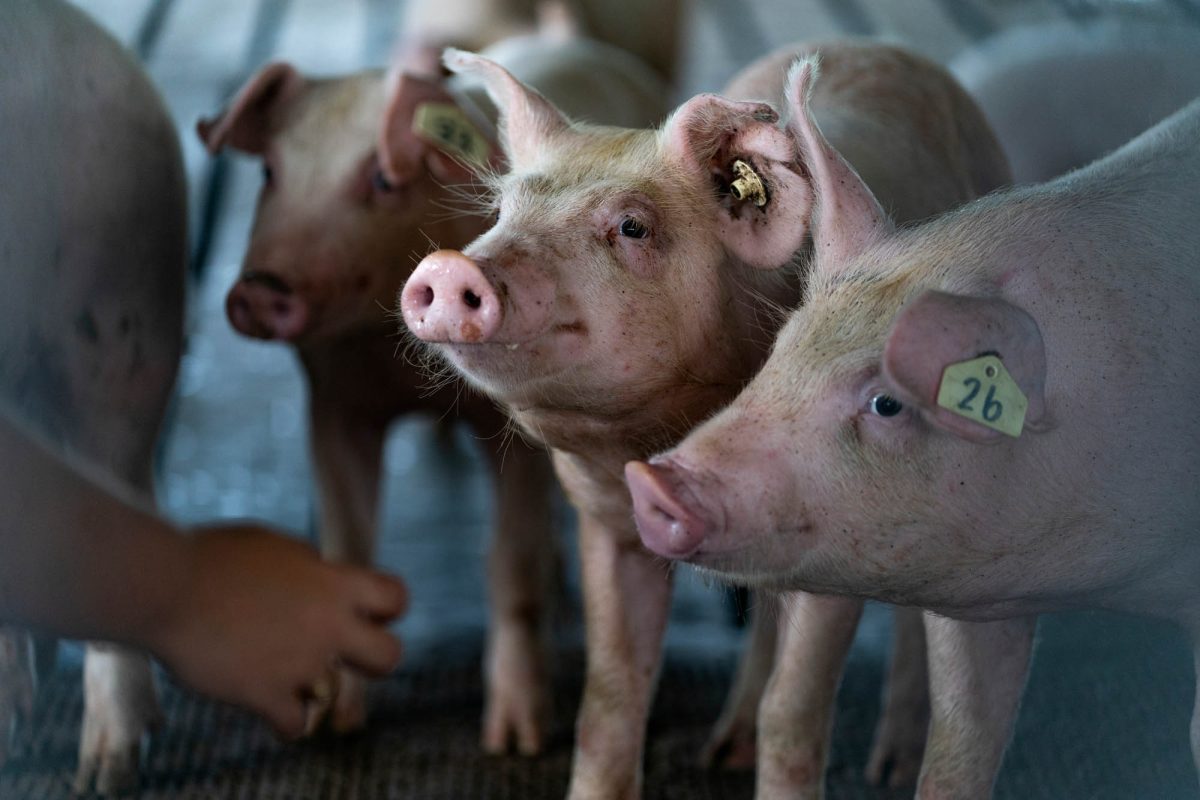Thousands of students walk by them everyday and many stop to admire the detail within their large structures. The Centennial Wood Carvings display 100 years of Aggie history to compel past, present and future students to reflect on their own Aggie experiences.
The Centennial Wood Carvings, located in the Memorial Student Center, were designed and carved by Rodney Hill, architecture professor, and his wife Sue Hill over the span of two years in the 1970s. Rodney Hill worked at a time when history books on Texas A&M were non-existent — he spent months searching through archives and key A&M personnels’ memories to compile what is now the first artistic rendering of A&M’s history.
Rodney Hill was selected to create six wooden panels highlighting important aspects of the 100 years of A&M history for the Centennial Convocation Day on Oct. 4, 1976. The panels are titled Campus Landmarks, Corps of Cadets, Sports and Traditions, Agriculture, Veterinary Medicine and Science and Engineering and the Arts. A seventh panel, Student Life, was added to the collection in the 1990s. Rodney Hill, with the help of his wife Sue Hill, had previously carved panels for the Highland Park Methodist Church.
“The Board of Regents called in and said they wanted the history of A&M from 1876 on,” Rodney Hill said. “At that point in time there was no book written ever on the history of A&M, so I spent three to four months in the archives and going around to each college on campus and talking to faculty, department heads and professors emeritus still in the area. Over in the archives at the time there were shoe boxes and packages of old A&M memorabilia, so I went through all of that and slowly put it together.”
He then presented the Board of Regents with a series of drawing board “cartoons,” and once approved, traced them on flat panels.
The Hills spent the next two years carving the panels in their garage. Rodney Hill was an associate professor at the time and taught classes in the morning and then would go home and join Sue Hill in carving the panels until midnight. Sue Hill would begin carving after their 5-year-old son went to school and a babysitter came to take care of their 3-year-old daughter.
“Some of our nicest hours were spent out there together,” Sue Hill said. “We’re a good team.”
Carving the panels came at a difficult time for the Hills. Both of their parents were ill, and Sue Hill’s father died while the couple tried to balance their carving project, “So it was a very close time for us,” she said.
The panels were completed just 10 days before the dedication ceremony.
The 3-by-8 foot panels are 1.5 inches thick, weigh 200 pounds each and are made out of American black walnut wood. The blank panels originally cost $2,000 each plus $1,000-$2,000 in carving tools. Rodney Hill estimates the set of panels is worth $500,000 today.
Sue Hill said the Board of Regents bought the panels, and although she can’t remember an exact amount she would estimate they were paid just under $30,000.
“We figured if we went by hours we must have gotten paid about $4.50 an hour for everything — his design time, the carving time, the finishing time,” Sue Hill said.
The Hills said they were faced with some unforeseen challenges last minute, forcing them to modify the carvings.
“Reveille [III] happened to die while I was working on it, so I had to quickly find a way to squeeze in the new Reveille [IV],” Rodney Hill said.
Sue Hill said they carved the equation of the universe into one of the panels and had unintentionally added the page number of the book in which they found it. They had to quickly carve it out once they found the mistake.
Early on they found a few solutions to correct any mistakes made, Sue Hill said.
“If a piece of wood would chip off, it was so much easier if you could find it and glue it back on,” Sue Hill said. “If you couldn’t find it, we learned that you could make a paste if you saved the sawdust, mix it with two-part apoxie, mix it up so it would be just like clay with just the right consistency and model whatever. If it was a big chunk we would have to find a piece of wood, try to get the grains to match, re-carve it and glue it back on.”
A personal touch that the Hills added to the veterinary panel was their Great Dane, who was frequently at the vet school due to allergies.
Ryan Trantham, MSC president and biomedical sciences senior, said the panels’ location contributes to the MSC’s atmosphere.
“One thing we point out in the tours is that the hallway where the panels are located serves as a natural transition between the vibrant, noisy areas of the student center and the quiet, reverent areas of the memorial,” Trantham said. “The panels link those two aspects of A&M and the MSC in a profound way.”
Through researching the history of A&M, Rodney Hill said he found an interrelationship between all of the aspects of A&M. He designed the carvings so any Aggie could relate to some aspect of them.




